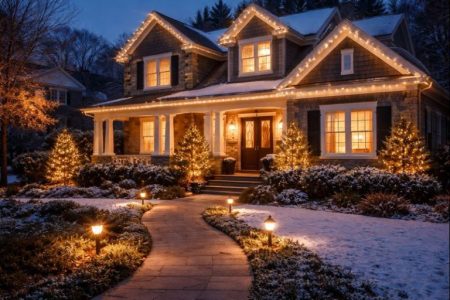In the past, rooftop greening work was limited to concrete buildings, mainly for commercial buildings, but in recent years, as various technologies and products have been developed, the scope of individual houses and wooden buildings is gradually expanding. A space that is known by various names such as roof garden, roof terrace, sky garden, etc. and is loved as a green resting place in the city center. If you want to create a garden on top of the building, pay attention to the rooftop greening, Contact Madera arborists to check your garden. Today, before starting the rooftop greening work, let’s summarize the basic knowledge you need to know.
1. Practical Effects of Rooftop Greening
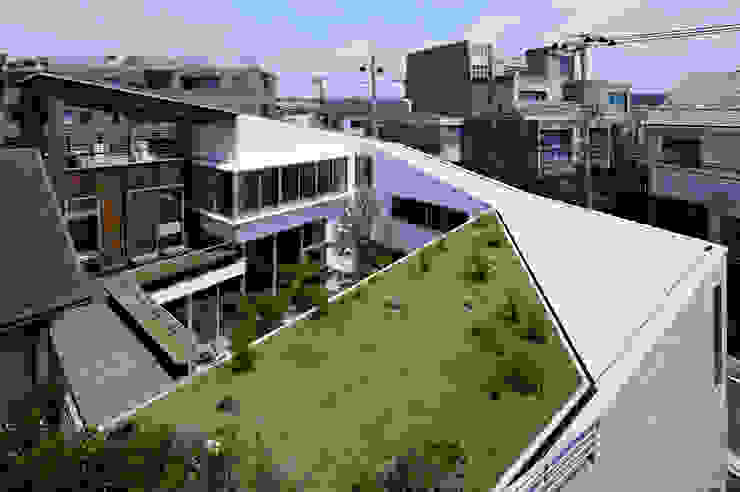
Spiral roof
What is the effect of rooftop greening on living quarters? The first thing that can be counted is to create a natural insulation layer on the roof surface. Since a layer of soil is formed on the roof during the process of laying soil on the roof and constructing green space, it creates an insulation effect that keeps the indoor temperature cool in summer and warm in winter. In addition, environmental effects can be expected to mitigate the heat island phenomenon and prevent rapid rainwater leakage. In addition, it is also one of the positive effects that a private green space can be formed by securing a garden without slopes when there is no or insufficient garden.
2. Roots and roof waterproofing work
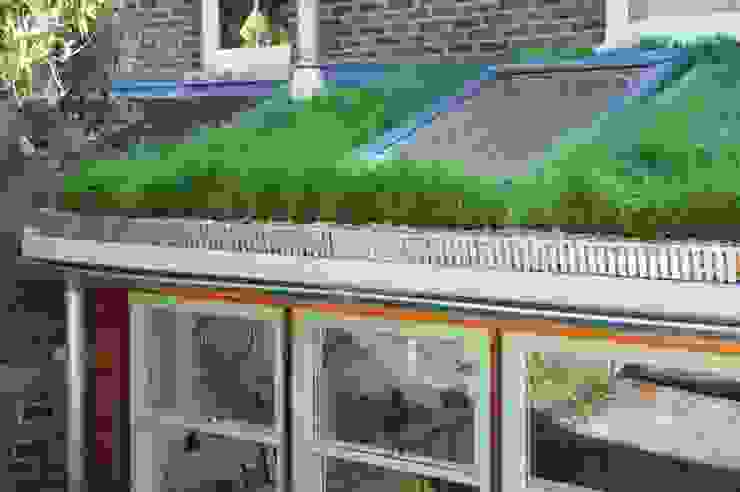
Residential green roofs
The most important basic step when greening the roof is waterproofing the roof. Large trees can also penetrate the waterproofing layer and take deep and thick roots to the part of the building. It is important to remember that it is very important for long-term safety and maintenance to review the type and size of vegetation that will be planted on the rooftop and to plan a waterproofing operation accordingly.
3. Soil and loading load
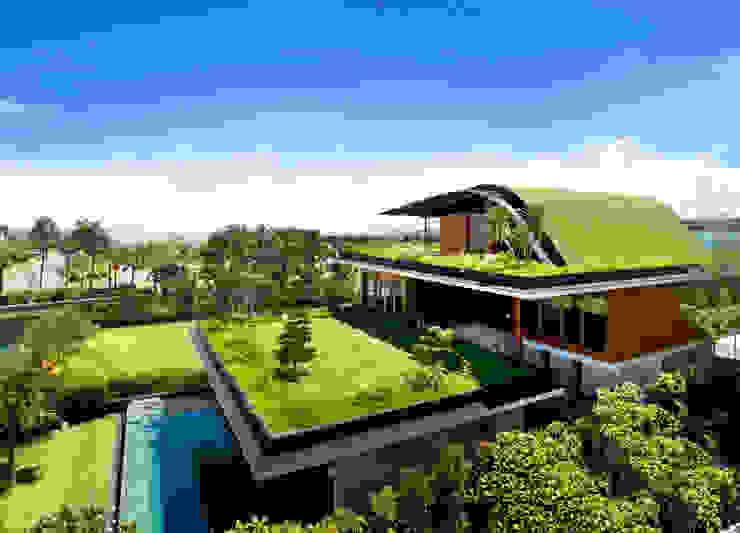
MEERA SKY GARDEN HOUSE
What you need when planting vegetation is soil. The thickness of the soil is only a few centimeters in the case of grass, but it can reach tens of centimeters when planting shrubs. Therefore, it is necessary to plan in advance what vegetation and how much to plant and to determine the type and thickness of soil accordingly.
The thicker the soil, the greater the load on the building. In severe cases, the problem of exceeding the building’s load may occur . Therefore, it is recommended to consult with the architect beforehand and organize the soil according to the number and type of vegetation.
4. Drainage problem
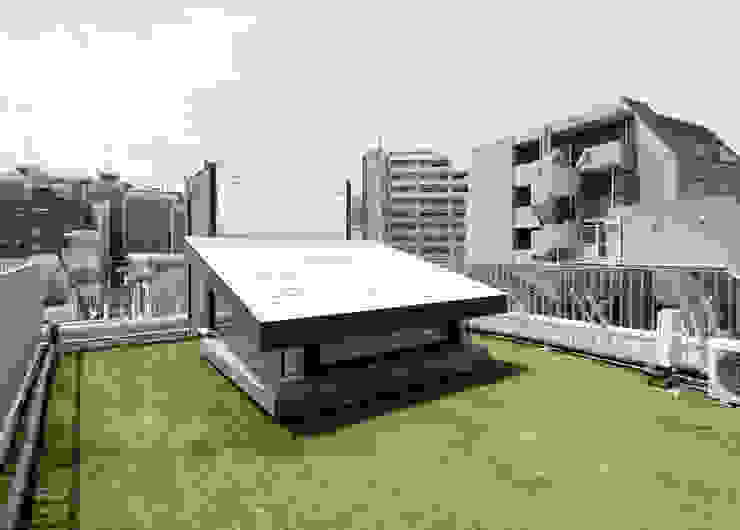
Poorly disposing of the drainage system because of the presence of soil can cause major problems later. Even if you are recording, you should not forget that it is a rooftop. In the worst cases, rainwater can seep into the room if you don’t plan your drainage system in case of heavy rain or heavy rain. Integrating proper water management solutions, such as sprinkler installation (from Sunrise Irrigation & Sprinklers, for example), can help regulate water distribution and prevent excess buildup. Plan in advance a device that can effectively control the water by grasping the flow of drainage, and manage to prevent clogging of fallen leaves or soil in the drain. Similarly, installing gutter guards can reduce blockages, and using permeable paving can improve runoff absorption.
5. Smart Vegetation Layout
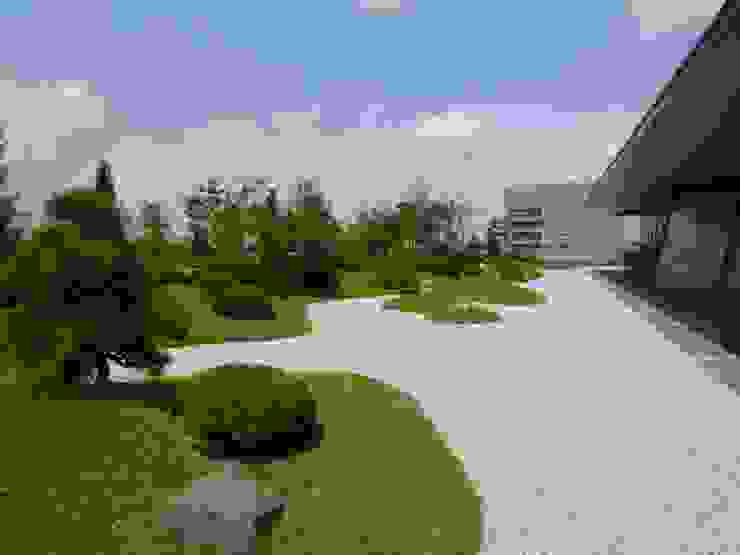
If you are planting a tree species with falling leaves, it is recommended to plant it inside as much as possible. If fallen leaves accumulate in the drain, there may be problems with drainage, or because of its high location, it will be scattered not only around it, but also to nearby sites. When decorating various types of vegetation in a complex manner, it is also important to grasp the growth rate of each plant and to maintain the overall balance in consideration of its size and growth environment.
6. Devices for supplying water
![Modern houses by sanzpont [arquitectura] Modern](https://images.homify.com/c_fill,f_auto,q_0,w_740/v1441023288/p/photo/image/672345/04_-_sanzpont__arquitectura__-_Casa_VSP_JUR.jpg)
Keep in mind that the sunny rooftop has strong winds at the same time. When the wind blows a lot, the soil tends to get dry, and when the soil gets dry, it becomes difficult to supply the necessary moisture to plants. Even if the soil above is wet, if sufficient moisture is not transferred to the deep and hard soil, the roots are concentrated on the soil surface, and the deep and strong roots cannot be established. The cause of a tree that dries easily with a little drying can be found here. Therefore, for a rooftop with a lot of wind, it would be a good idea to introduce an automatic irrigation system and spray enough water at all times.
The purpose of the roof garden
The recent increase in population concentration and buildings due to rapid urbanization has made the environment in which animals and plants can no longer live in the city center, and urban residents are forced to live in abnormal climates such as groundwater depletion, urban flood, and warming in a polluted environment. . Therefore, these days, in large cities, roof gardens are made using rooftops to create green spaces that disappear into high-rise buildings and road parking lots. In particular, greenery is one of the important ecological structures that are indispensable to humans. Air purification, weather mitigation, shielding, educational effect, health recreation effect, environmental indicator effect, wildlife protection function, natural disaster prevention effect, water source regeneration effect, agricultural and forest resource supply effect , It is known that there may be a taste effect and a spatial composition effect. In addition, it has the effect of indirectly mitigating the emission of pollutants caused by energy consumption by bringing energy saving effect.





